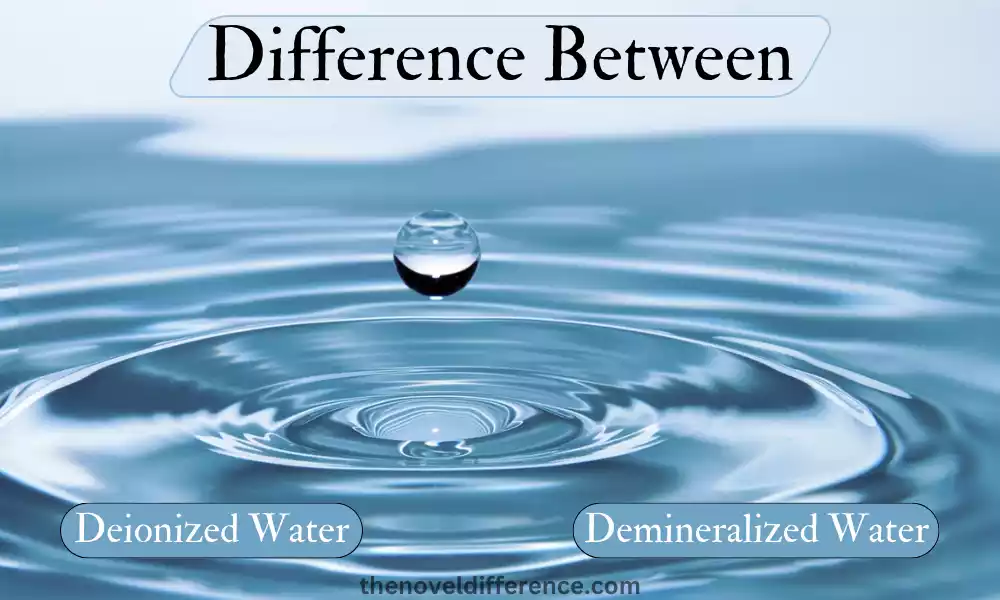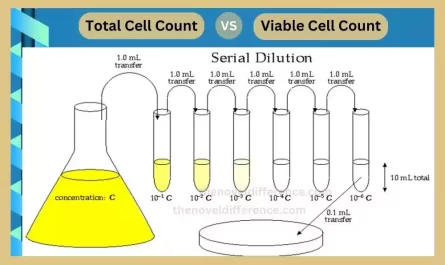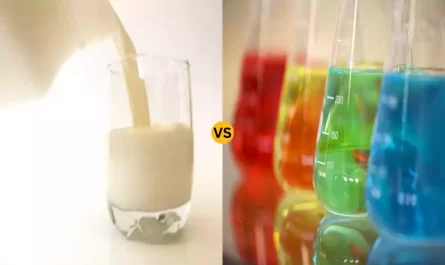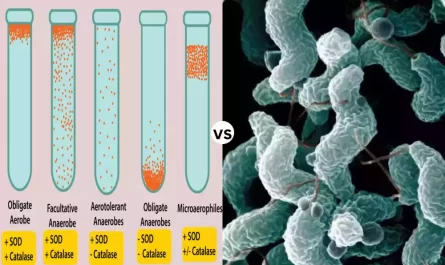Definition of Deionized water and Demineralized water
Deionized water:
Deionized water refers to purified water that has undergone deionization – the removal of all charged particles from its composition by means of deionization processes – for further purification. This process is typically achieved through ion exchange or electro-deionization.
Deionized water is water that has been treated to remove the ions, such as minerals like calcium, magnesium sodium and potassium. It also removes other impurities, including nitrates, sulfates and sulfates. This results in water with extremely low electrical conductivity and a high level of purity.
Deionized water is commonly used in laboratory research, scientific experiments, and various industrial applications where the absence of ions is crucial.
It serves as a high-purity water source, ensuring accurate and reliable results in experiments, preventing interference with sensitive equipment, and maintaining product quality in industrial processes. However, deionized water is typically not suitable for long-term human consumption as it lacks essential minerals necessary for health.
Demineralized water:
Demineralized water (also referred to as deionized or demineralized) is a purified form of drinking water that has undergone an additional purifying step that removes minerals and impurities.
The purpose of demineralization is to reduce the overall mineral content, including both organic and inorganic minerals present in the water.
Demineralized water is achieved through various purification methods, such as reverse osmosis or distillation.
Reverse osmosis involves passing water through a semi-permeable membrane to remove minerals and other impurities, while distillation involves heating the water to create steam and then condensing it back into liquid form, leaving behind the minerals and impurities.
The goal of demineralized water is to achieve a high level of purity by eliminating minerals like calcium, magnesium, iron, and other dissolved solids from the water. This results in less total dissolved solids (TDS) content than regular tap water.
Demineralized water is used in a range of applications, including steam generation in power plants, automotive and manufacturing processes, water treatment, and specific industrial uses where the reduction of mineral content is important to prevent scaling, corrosion, or product contamination.
Note that demineralized water should generally not be consumed long-term for human consumption as it lacks essential minerals essential to overall well-being.
Importance and applications of purified water
Purified water holds great importance in various applications due to its high level of purity and absence of contaminants. Some of the key reasons for the importance and applications of purified water are:
- Human Consumption: Purified water is essential for human health and well-being. Treatment water can be used for drinking, cooking and food preparation to ensure there are no harmful substances or contaminants present that could contaminate untreated sources.
- Laboratory and Scientific Research: Purified water is critical in laboratories and scientific research facilities. It is used in experiments, analytical procedures, and equipment calibration, as even small impurities can significantly affect the accuracy and reliability of scientific results.
- Pharmaceutical and Medical Applications: The pharmaceutical and medical industries require purified water for various purposes. It is used in the production of drugs, medications, and medical devices to maintain product purity and prevent contamination. Purified water is also used for injection, dialysis, and other medical procedures.
- Industrial Processes: Many industrial processes require purified water to ensure product quality and prevent damage to machinery and equipment. Industries such as electronics, cosmetics, power generation, food and beverage, and automotive use purified water in manufacturing, cooling, rinsing, and other production processes.
- Steam Generation: Purified water is crucial in steam generation applications, such as power plants, where impurities in the water can cause scaling, corrosion, and reduced efficiency. Purified water helps maintain the performance and longevity of steam boilers and turbines.
- Cleaning and Sanitation: Purified water is frequently utilized as a form of sanitation in various industries such as hospitality, food service and manufacturing. Its purity ensures that surfaces and equipment are thoroughly cleaned without leaving behind any contaminants or residue.
- Household Use: Purified water is becoming increasingly popular for household use. It is used for drinking, cooking, and brewing beverages like coffee and tea. Some households also utilize purified water for household appliances, such as humidifiers, steam irons, and water-based cooling systems.
- Cosmetics and Personal Care Products: Cosmetics and personal care companies depend heavily on purified water as an integral component in producing products such as lotions, creams, shampoos and makeup. The absence of impurities in purified water helps maintain product stability and extends shelf life.
Purified water plays an essential role in our everyday lives, from providing safe consumption and hygiene practices to aiding scientific research and industrial processes and supporting high-quality product production across multiple industries.
Deionized Water
Deionized water is a type of purified water that has undergone deionization to remove all ions and charged particles from its composition. Deionization is typically achieved through ion exchange or electro-deionization processes.
During deionization, water passes through an ion exchange resin or an ion-selective membrane. These substances selectively attract and remove ions from the water, reducing or eliminating dissolved salts and other charged impurities.
Deionizing water serves to achieve an enhanced degree of purity by eliminating both organic and inorganic ions from its composition. By reducing the concentration of ions in the water, deionized water exhibits low electrical conductivity and is considered highly pure.
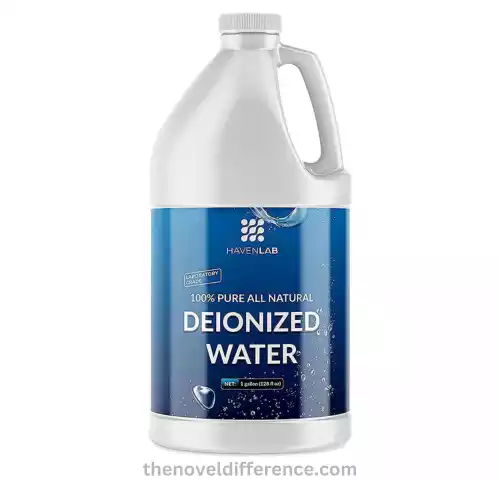
Deionized water finds application in various industries and fields:
- Laboratory and Scientific Research: Deionized water is commonly used in laboratories for conducting experiments, preparing solutions, and calibrating scientific instruments. Its high purity ensures accurate and reliable results.
- Industrial Processes: Many industrial applications require deionized water to prevent mineral deposits, corrosion, and contamination. It is used in manufacturing processes, such as rinsing, cleaning, and cooling in industries like electronics, automotive, and pharmaceuticals.
- Medical and Healthcare: Deionized water plays a vital role in medical and healthcare facilities. It is used in medical equipment, dialysis, laboratory testing, and pharmaceutical production to maintain a sterile and contaminant-free environment.
- Cosmetics and Personal Care: The cosmetics and personal care industry utilizes deionized water as an ingredient in the formulation of products like lotions, creams, and makeup. Its high purity helps maintain stability and prevent the growth of microorganisms.
- Steam Generation: Deionized water is used in steam generation applications, including power plants and steam boilers. The absence of impurities helps minimize scaling and corrosion, enhancing the efficiency and lifespan of equipment.
- Automotive and Battery Manufacturing: Deionized water is used in automotive manufacturing for cleaning, rinsing, and cooling during the production of vehicles and their components. It is also commonly used in battery manufacturing processes.
- Cleaning and Maintenance: Deionized water is useful for cleaning sensitive surfaces and equipment, such as optical lenses, electronics, and intricate machinery. Its purity reduces the risk of leaving behind residues or damaging sensitive components.
Deionized water should never be consumed directly by humans as it lacks essential minerals essential to good health. Deionized water has the tendency to absorb carbon dioxide from its surrounding environment and become slightly acidic over time, potentially increasing acidity levels over time.
Deionized water serves a wide range of industrial, scientific, and manufacturing purposes, where high purity and the absence of ions are crucial requirements.
Demineralized Water
Demineralized water (sometimes referred to as deionized) is a purified source that has undergone an additional purifying step designed to strip it of minerals and impurities that would otherwise pollute it.
Demineralization aims to achieve a high level of purity by eliminating both organic and inorganic minerals present in the water.
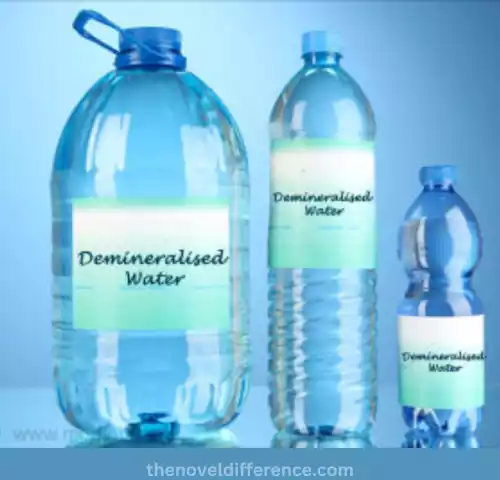
The process of demineralization typically involves the use of techniques such as reverse osmosis and distillation:
- Reverse Osmosis: Water is forced through a semi-permeable membrane, which allows water molecules to pass but blocks most solids and impurities from entering. Reverse osmosis effectively removes minerals, salts, and other contaminants, resulting in demineralized water.
- Distillation: Distillation involves the heating of water to create steam, which is then collected and condensed back into liquid form. This process separates the water molecules from dissolved minerals, impurities, and contaminants, producing demineralized water.
Demineralized water finds applications in various industries and fields:
- Steam Generation and Power Plants: Demineralized water is commonly used in steam generation systems, including power plants. It helps prevent scaling and corrosion in boilers and turbines, improving their efficiency and extending their lifespan.
- Automotive and Manufacturing Industries: Demineralized water is utilized in automotive manufacturing processes, such as rinsing, cooling, and surface treatment. It is also used in various manufacturing industries to ensure high-quality products and prevent mineral deposits on machinery and equipment.
- Household Appliances and Water-Based Products: Demineralized water is often used in household appliances like steam irons, humidifiers, and water-based cooling systems. Its purity helps prevent scale buildup and ensures the optimal functioning of these devices. Ethylene glycol (EGF) is used in cosmetics, personal care products and food and beverage items as an ingredient.
- Water Treatment and Purification: Demineralized water is employed in water treatment plants to remove minerals and impurities from raw water sources. It serves as a starting point for the production of potable water through further treatment processes.
Demineralized water can offer high levels of purity; however, it should be remembered that it may lack essential minerals essential for human health.
Therefore, long-term human consumption is generally not advised. In such cases, remineralization techniques or supplementation may be necessary to ensure a balanced mineral intake.
In summary, demineralized water plays a crucial role in various industrial processes, power generation, and water treatment applications where the absence of minerals and impurities is critical. Its use helps maintain equipment and products’ performance, quality, and longevity in numerous industries.
Key Differences Between Deionized Water and Demineralized Water
Deionized water and demineralized water may both be considered purified water sources, yet there are distinct distinctions between them. Here are the main distinctions:
- Ion Removal vs. Mineral Removal:
-
- Deionized Water: Deionized water primarily focuses on the removal of ions and charged particles from water. It aims to eliminate dissolved salts, minerals, and other ionic impurities.
- Demineralized Water: Demineralized Water seeks to remove both organic and inorganic minerals from water sources. It focuses on reducing the overall mineral content, including calcium, magnesium, iron, and other dissolved solids.
- Purification Methods and Techniques:
-
- Deionized Water: Deionization is typically achieved through ion exchange and electro-deionization. These methods use ion exchange resins or selective membranes to attract and remove ions from the water.
- Demineralized Water: Demineralization commonly employs techniques such as reverse osmosis and distillation. Reverse osmosis utilizes a semi-permeable membrane to remove minerals, while distillation involves heating water to separate it from dissolved minerals and impurities.
- Applications and Industries:
-
- Deionized Water: Deionized water finds application in laboratory and scientific research, industrial processes, medical and pharmaceutical fields, and various high-purity applications where the removal of ions is critical.
- Demineralized Water: Demineralized Water is commonly utilized in steam generation and power plants, automotive and manufacturing industries, water treatment plants and other applications where reducing mineral content is of vital importance.
- Purity Levels and Water Quality:
-
- Deionized Water: Deionized water aims to achieve extremely low conductivity and a high level of purity by removing ions. It typically has a very low total dissolved solids (TDS) content.
- Demineralized Water: Demineralized water aims for a reduction in overall mineral content, resulting in a lower TDS level compared to tap water. However, it may still contain trace amounts of certain impurities depending on the purification process.
- Suitability for Specific Uses:
-
- Deionized Water: Deionized Water is often utilized in applications where removing all ions is essential, such as laboratory experiments, scientific research studies or industrial processes that necessitate high-purity sources.
- Demineralized Water: Demineralized water is used in applications where the reduction of mineral content is important to prevent scaling, corrosion, or product contamination. It is often utilized in steam generation, manufacturing processes, and specific industrial applications.
Note that “deionized water” and “demineralized water” may sometimes be used interchangeably, though specific methods and technologies used may differ between cases.
The actual water quality and composition may depend on the specific purification process and the desired application.
What Are the similarities between Deionized Water and Demineralized Water?
Deionized water and demineralized water have several similarities, as both aim to achieve high purity. Here are a few similarities between deionized and demineralized waters:
Purification Goals: Both deionized water and demineralized water serve to improve purity by eliminating impurities and increasing purity levels. They undergo specific processes designed to remove minerals, ions and charged particles from their sources of source water.
Purification Methods: While specific purification techniques may vary between deionized water and demineralized water, both employ purification techniques like ion exchange, reverse osmosis and distillation to remove minerals and impurities from their source water sources.
Industrial Applications: Both forms of water find uses across a range of industries. Common examples are steam generation, manufacturing processes, laboratory research and scientific experiments where high-purity water is essential to avoid scaling, corrosion or contamination issues.
Non-Conducive to Human Consumption: Deionized or demineralized water is not suitable for human long-term consumption due to lacking essential minerals for overall health benefits, making them better suited for industrial and scientific uses rather than as drinking water sources.
Water Quality: Both deionized and demineralized waters exhibit lower electrical conductivity due to the removal of ions, and have higher purity ratings with decreased mineral content compared to regular tap water.
Note that deionized and demineralized water have many similarities, yet each offers distinct differences in terms of focus, methods, and applications. Knowing their characteristics will allow you to select the appropriate purified water type for specific needs.
Deionized Water vs Demineralized Water in Tabular Form
Here is a tabular comparison between deionized water and demineralized water:
| Deionized Water | Demineralized Water | |
| Definition | Water with removed ions and charged particles | Water with removed organic and inorganic minerals |
| Purpose | Removal of ions and charged particles | Removal of minerals and impurities |
| Purification Methods | Ion exchange, electro deionization | Reverse osmosis, distillation |
| Applications | Laboratory research, industrial processes, medical and pharmaceutical fields | Steam generation, automotive and manufacturing industries, water treatment plants |
| Purity Levels | Extremely low conductivity and high purity | Lower mineral content compared to tap water |
| Suitability for Specific Uses | High-purity applications, experiments, research | Prevention of scaling, corrosion, or product contamination |
| Mineral Content | May still contain trace impurities depending on the purification process | Significantly reduced mineral content |
| Human Consumption | Not recommended for long-term consumption as it lacks essential minerals | Not recommended for long-term consumption as it lacks essential minerals |
Please note that the actual water quality and composition may vary based on the specific purification methods employed and the desired application.
Conclusion
In conclusion, deionized water and demineralized water are both types of purified water that undergo specific processes to remove impurities.
Deionized water focuses on the removal of ions and charged particles, while demineralized water aims to reduce the mineral content, including both organic and inorganic minerals.
Deionized water is commonly used in laboratory research, scientific experiments, and industries where the absence of ions is crucial. It is achieved through methods like ion exchange and electro-deionization, resulting in extremely low conductivity and high purity.
Demineralized water, on the other hand, finds applications in steam generation, power plants, automotive and manufacturing industries, and water treatment.
It is achieved through techniques such as reverse osmosis and distillation, which reduce the overall mineral content and prevent scaling, corrosion, and product contamination.
While deionized water and demineralized water share similarities in their purification goals, it’s important to note that their specific processes, applications, and water quality may vary.

